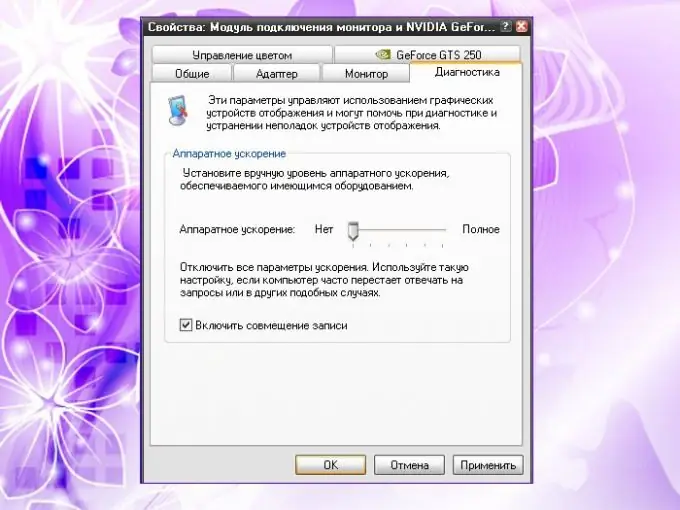Hardware acceleration allows the user to enjoy high-quality graphics in films, computer games, or just work comfortably with images. The hardware built into the video card "offloads" the processor from performing some of the operations. However, in certain cases, you may need to disable hardware acceleration.

Instructions
Step 1
If graphics acceleration conflicts with the functionality of other running applications, use the Display component to disable it. Right-click in any area of the "Desktop" free of folders and files. In the drop-down menu, select the last item "Properties".
Step 2
If for some reason you cannot call the component from the "Desktop", click the "Start" button or the Windows key and open the "Control Panel". In the "Design and Themes" category, left-click on the "Display" icon or select one of the available tasks.
Step 3
In the "Display Properties" dialog box that opens, go to the "Options" tab and click on the "Advanced" button located at the bottom of the window. A new window "Properties: Monitor Connector Module and [name of your video card]" will open. Go to the "Diagnostics" tab in it.
Step 4
In the Hardware Acceleration group, drag the slider to the far left of None. Click on the "Apply" button for the new settings to take effect. Close the windows using the OK button or the [x] icon in the upper right corner of the window.
Step 5
You can turn off DirectDraw, Direct3D, and AGP texture acceleration using the DirectX Diagnostic Tool. From the Start menu, select Run. In an empty field without spaces or quotes, enter the dxdiag command and click the OK button or the Enter key. Wait for the Diagnostic Tool to finish collecting data.
Step 6
Go to the "Display" tab and in the "DirectX Features" group click on the "Disable" button opposite the acceleration that you want to remove. Confirm your action. You can also disable DirectSound hardware acceleration in the Diagnostic Tools window. To do this, go to the "Sound" tab and move the slider in the corresponding group to the extreme left position.






